It was the year 2006. I was seven years old.
With the rays of the late afternoon sun lightly filtering through the leaves of the surrounding trees and onto my back, I would sit on the concrete floor by the school entrance to do some of my take-home tasks while waiting for my mom to pick me up. Most people would probably think I was a very hardworking first grader. But in reality, it was just my way of making sure I would have absolutely nothing to do in the evening.
You see, primetime fantaseryes were a massive part of my childhood. I vividly remember spending what was supposed to be my afternoon playtime doing homework just so my parents would allow me to watch TV after dinner. Dare I say, “Mulawin,” “Darna,” “Encantadia,” and “Majika” had me in a chokehold as a child.
But then the inevitable happened. I started growing up while local networks eventually stopped producing fantaseryes. I saw how the quality of shows declined through the years, and before I knew it, I had stopped watching TV altogether.
I never thought there would come a time when I would sit in front of the TV again, but GMA’s latest historical portal fantasy series “Maria Clara at Ibarra” convinced me to give local TV a second chance
Fast forward to 2022, it’s been a little over seven years since I last tuned in to a primetime series. (If my memory serves me right, “Forevermore” was my last.) I never thought there would come a time when I would sit in front of the TV again, but GMA’s latest historical portal fantasy series “Maria Clara at Ibarra” convinced me to give local TV a second chance.
I was haphazardly browsing my phone one evening when I stumbled upon a trending hashtag on Twitter: #MCIAngSimula. What greeted me was a clip of Klay (Barbie Forteza) in her modern pajamas walking down the streets of old Intramuros. She was sticking out like a sore thumb among people clad in traditional clothing because apparently, she was transported into the pages of Jose Rizal’s “Noli Me Tangere.”
I got intrigued, so I decided to watch the entire pilot episode. Right off the bat, I could already tell that the show wouldn’t be a cringefest, especially when its cinematography is something I hadn’t seen from GMA in a while. The script is fairly good, too. It exhibits a striking balance of unrestrained frivolity and a sense of sentimentality.
But besides the nostalgia and giggles, I am also amazed by its biting social commentary. “Maria Clara at Ibarra” already has 10 episodes so far and I love how it isn’t stifled by a mediocre storyline and so-so production values. Without losing the plot, the show smoothly touches on some pressing social issues that are (un)surprisingly still very relevant today.
Padre Damaso forcibly cutting a woman’s hair
Episode 2 (29:33 to 32:40)
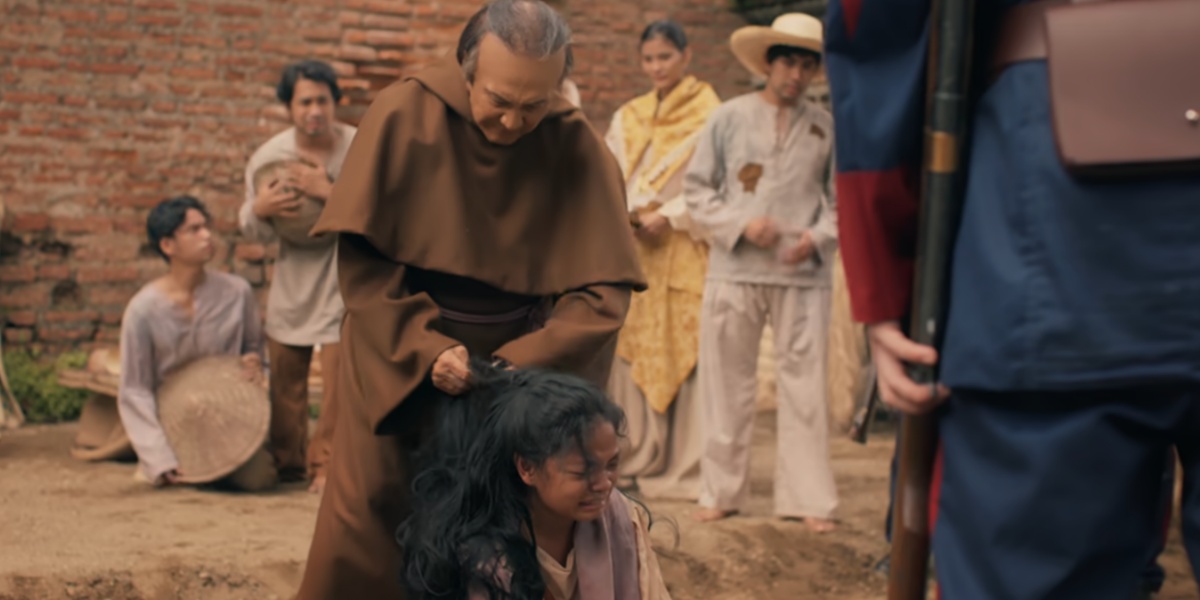
Photo from “Maria Clara at Ibarra”
In case you slept through your Noli Me Tangere classes in high school or college and didn’t know what kind of person Padre Damaso was, he was the poster child of abuse. During that time, friars (or priests) had as much power and influence as the government and could easily punish people who “sinned” however they wanted.
The woman (Chai Fonacier) in this scene is an alleged mujer libre—a sex worker. Padre Damaso (Tirso Cruz III) cuts her hair in public (as a warning not to do what she did or they would end up like her) while civil guards repeatedly hit her with a whip before locking her up in prison.
With a couple of hundred years apart, you’d think our modern-day situation would at least be better. But the joke’s on us because this specific sequence is reminiscent of the numerous cases of violence against women (and children) perpetrated by self-righteous men who think it’s cool or manly to lash out and assault them.
Crisostomo Ibarra’s group of friends demeaning women
Episode 3 (24:22 to 27:47)
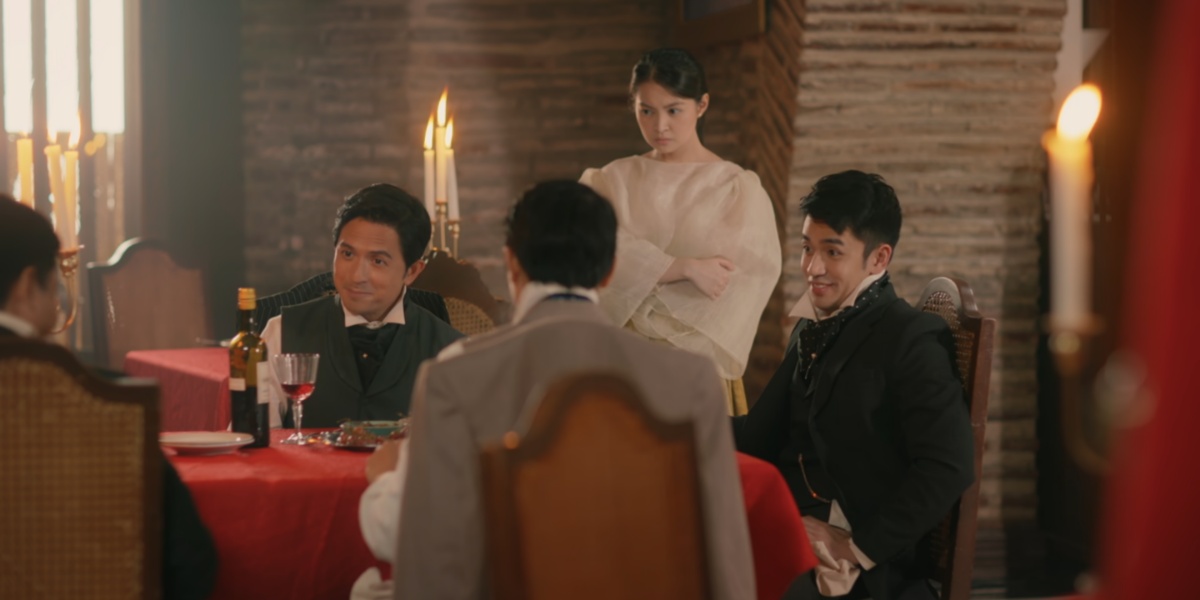
Photo from “Maria Clara at Ibarra”
If it wasn’t obvious enough, the Spanish colonial period was a nightmare for women. As shown in the series, education was only largely available to men because of stereotypical beliefs that women were better off at home as pliant daughters, wives, or mothers. Even their opinions were usually considered irrelevant.
In this particular scene, one of Crisostomo Ibarra’s (Dennis Trillo) friends is talking about how quiet and submissive women would be a blessing to men while educated ones would only cause them headaches.
Such a familiar scenario, isn’t it? As much as women can study whatever discipline they want now, many people still think they aren’t as capable and competent as men are.
Klay does a great job defending women and their right to education, though. There’s just something so satisfying when Ibarra’s friends are left speechless after she goes: “Intelligence has nothing to do with one’s gender. Everyone—men, women, children, even the rich and the poor—has that basic human right to education.” It surely goes down in history as one of the most iconic “abante, babae” moments on Philippine TV.
Padre Damaso (again) ordering civil guards to lock Don Rafael in prison
Episode 5 (16:10 to 21:10)
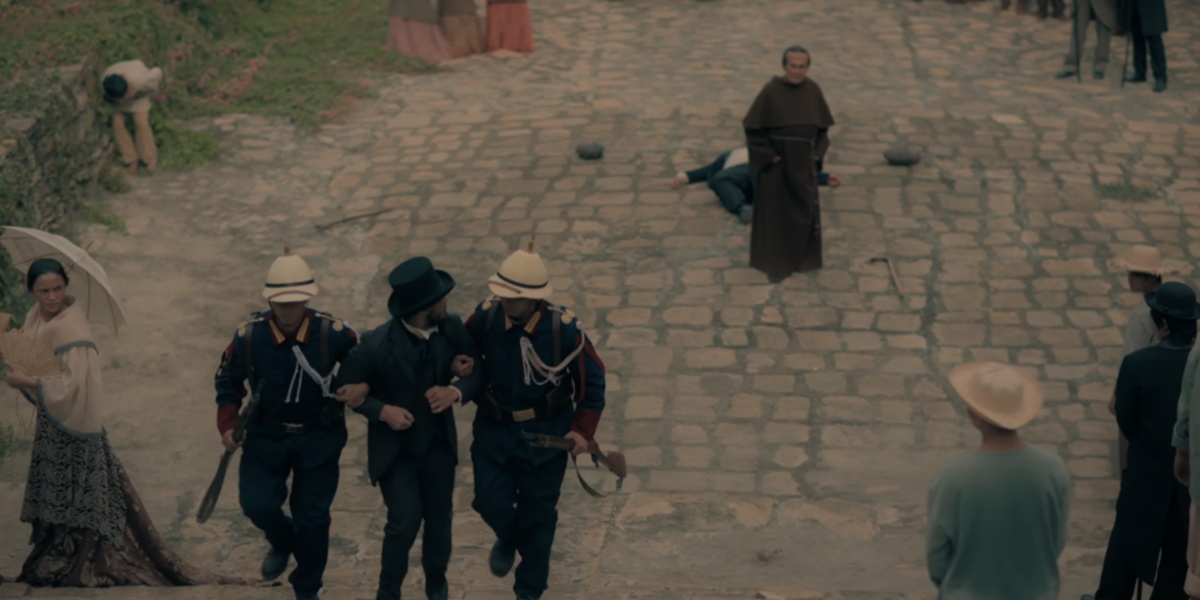
Photo from “Maria Clara at Ibarra”
As I mentioned earlier, friars had so much power that they could send someone to prison in a snap and even without sufficient evidence. For instance, Ibarra’s father Don Rafael is imprisoned after defending a child from a violent government tax collector. The tax collector dies upon bumping his head against a rock during the fight. Padre Damaso, who saw Don Rafael as his enemy for being a “nonconformist,” took this opportunity to frame him and ruin his name and reputation.
Don Rafael dies in prison while helplessly waiting for justice to prevail. And at present, there are a lot of Don Rafaels who have fallen victim to the country’s faulty justice system. Due process of law only seems to favor the powerful, while ordinary citizens could lose their freedom over false accusations and biases. Some wait years before they could clear their names in court while others die without even having the chance to defend themselves.
Klay and Fidel arguing about social inequality
Episode 9 (1:42 to 5:05)
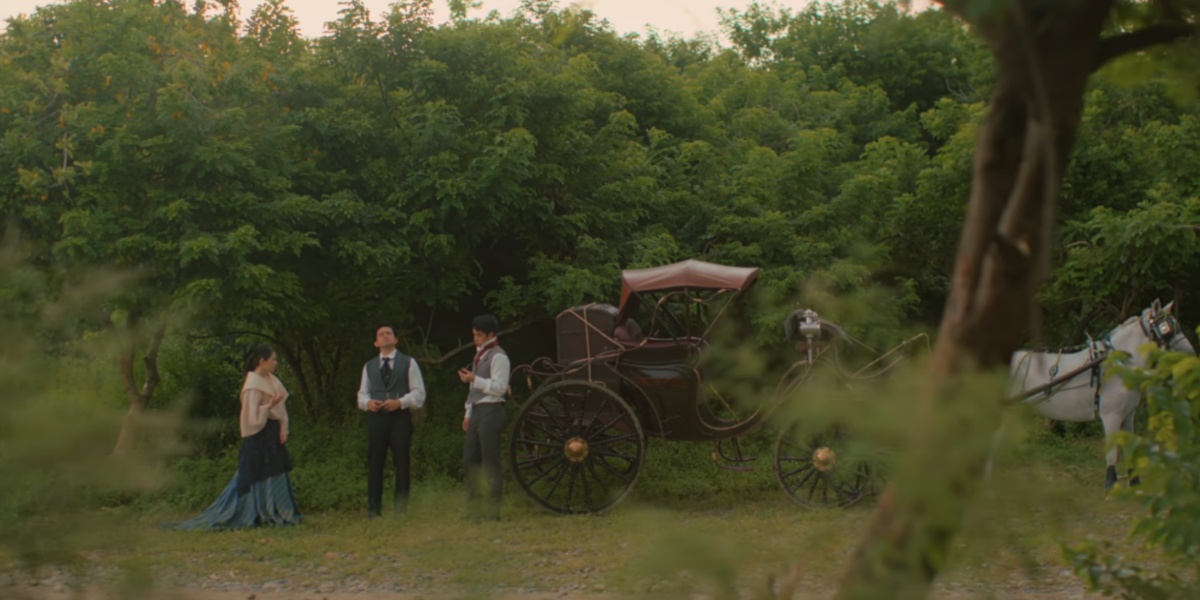
Photo from “Maria Clara at Ibarra”
You have no idea how much I wanted to punch the hell out of Fidel’s (David Licauco) face when he claims that the rich are more hardworking than the poor, making them more deserving of their privilege. In his words, “Tama ang isang [prayleng laging nagsasabing] likas na tamad talaga ang mga indio kaya’t sila’y naghihirap.” (The friars were right. Native Filipinos are poor because they are lazy by nature.)
But Klay, as a Gen Z icon who doesn’t tolerate elitist bullshit, fights back and argues that the poor remain poor because of the rich (and the powerful) who don’t provide proper compensation for their hard work. And honestly, she has a point.
Until now, social inequality remains rampant. Unfair labor practices are still being committed. Our local farmers and fisherfolks, for example, are stuck at the bottom of the social hierarchy despite being hailed as the “backbone” of our economy. Why? Because of flawed policies—or lack thereof.
Despite the endless talks of change among those in power and their promises of prioritizing the plight of the underprivileged, we have yet to really see significant progress when it comes to uplifting the country’s poverty-stricken families and minorities.
I’m looking forward to watching the rest of “Maria Clara at Ibarra” and witnessing how things will unravel. At the pace it’s going right now, the show can once again be a good trigger for us to finally initiate dialogues on issues that plague us as a nation. Because if our history has taught us anything, it is that we need constant reminding of our past struggles—especially when they still exist, affect, and oppress many Filipinos at present.
Read more:
5 award-winning Filipino novels that’ll make for cool films (or series)
What’s stopping you from watching ‘Gaya Sa Pelikula?’
Dark humor shaking: ‘Patay na si Hesus’ is OTW to Netflix
Screencap from “Maria Clara at Ibarra” Episode 9
Art by Yel Sayo
















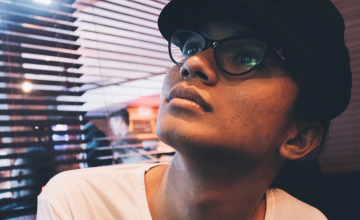







Comments